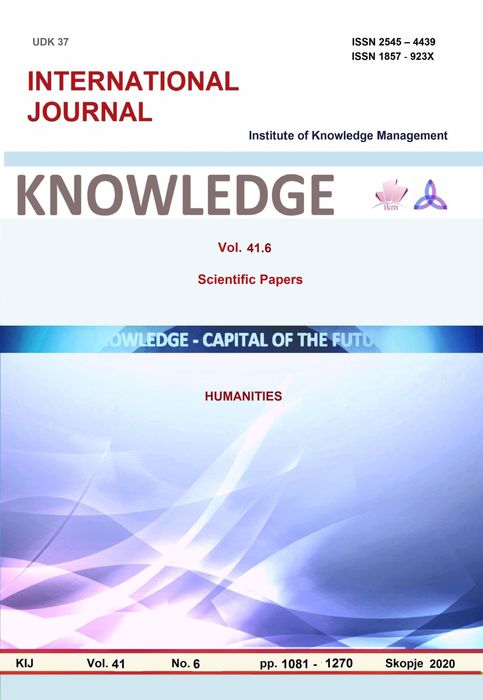ASSESSMENT OF THE INTELLIGIBILITY OF SPEECH IN PERSON WITH DYSARTHRIA
ASSESSMENT OF THE INTELLIGIBILITY OF SPEECH IN PERSON WITH DYSARTHRIA
Author(s): Radostina KostovaSubject(s): Health and medicine and law, Welfare services
Published by: Scientific Institute of Management and Knowledge
Keywords: dysarthria; assessment; intelligibility; speech
Summary/Abstract: Dysarthria is a speech disorder that belongs to the group of neurologically based communication disorders. It can occur at any age – at birth or after an injury or even after an illness. Dysarthria may range in severity from minimal impairment to that which make the speech practically unintelligible. Excessive nasalization, disordered speech prosody, imprecise articulation, and variable speech rate are often associated with damage to neuromuscular systems regulating speech. Disorders in speech physiology may result in distortion of the acoustic signal and reduced speech intelligibility. Reduced speech intelligibility affects all aspects of life. Individuals with intelligibility deficits experience difficulties with social interaction, academic performance, and vocational placement. The purpose of this article is to present some of the results obtained after conducting a study to assess the Intelligibility of speech in persons with dysarthria. The methodology that was used is Frenchay Dysarthria Assessment Second edition (FDA-2). The test is translated and adapted into Bulgarian language according to its phonetic rules. The test is also used to determine the form of dysarthria. The participant of the study are total of 80 people aged between 20-90 years old with acquired dysarthria. All of them have a confirmed neurological diagnosis such as stroke, Parkinson's, multiple sclerosis, myasthenia gravis, epilepsy, etc. The participants are divided into five groups according to the form of dysarthria – flaccid, spastic, ataxic, extrapyramidal and mixed dysarthria. The assessment of intelligibility of speech is carried out at three levels - words, sentences and conversation. Each person is required to read 10 words, 10 sentences and to have a 5-minute conversation on the topic of favorite activities and hobbies. The results obtained of all five groups of dysarthria are analyzed by statistical methods. They show that there is a statistically significant difference in terms of intelligibility of speech in the different forms of dysarthria. The most difficult to understand for the listener is the speech of the mixed type of dysarthria. This group of people have unintelligible speech at all three levels – words, sentences and conversation. The first part of the FDA-2 requires reading of ten words. The persons demonstrate similar results in reading words. The listener can understand more than six words from the participants‘ utterances with ataxic, flaccid and extrapyramidal type of dysarthria. The second task of the test evaluates intelligibility at sentence level. The highest scores show persons with the ataxic dysarthria. This means that their speech is understandable at the sentence level. The most difficult task for all participants is the conversation. The speech of persons with dysarthria when having a conversation is most difficult to understand by the listener. The results confirm the hypothesis that the severity of dysarthria has a negative influence on the degree of intelligibility of speech according to the different forms of dysarthria.
Journal: Knowledge - International Journal
- Issue Year: 41/2020
- Issue No: 6
- Page Range: 1189-1193
- Page Count: 5
- Language: English

